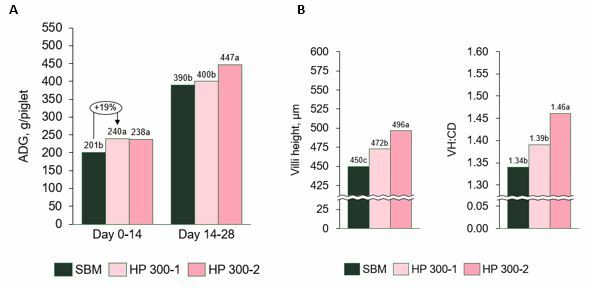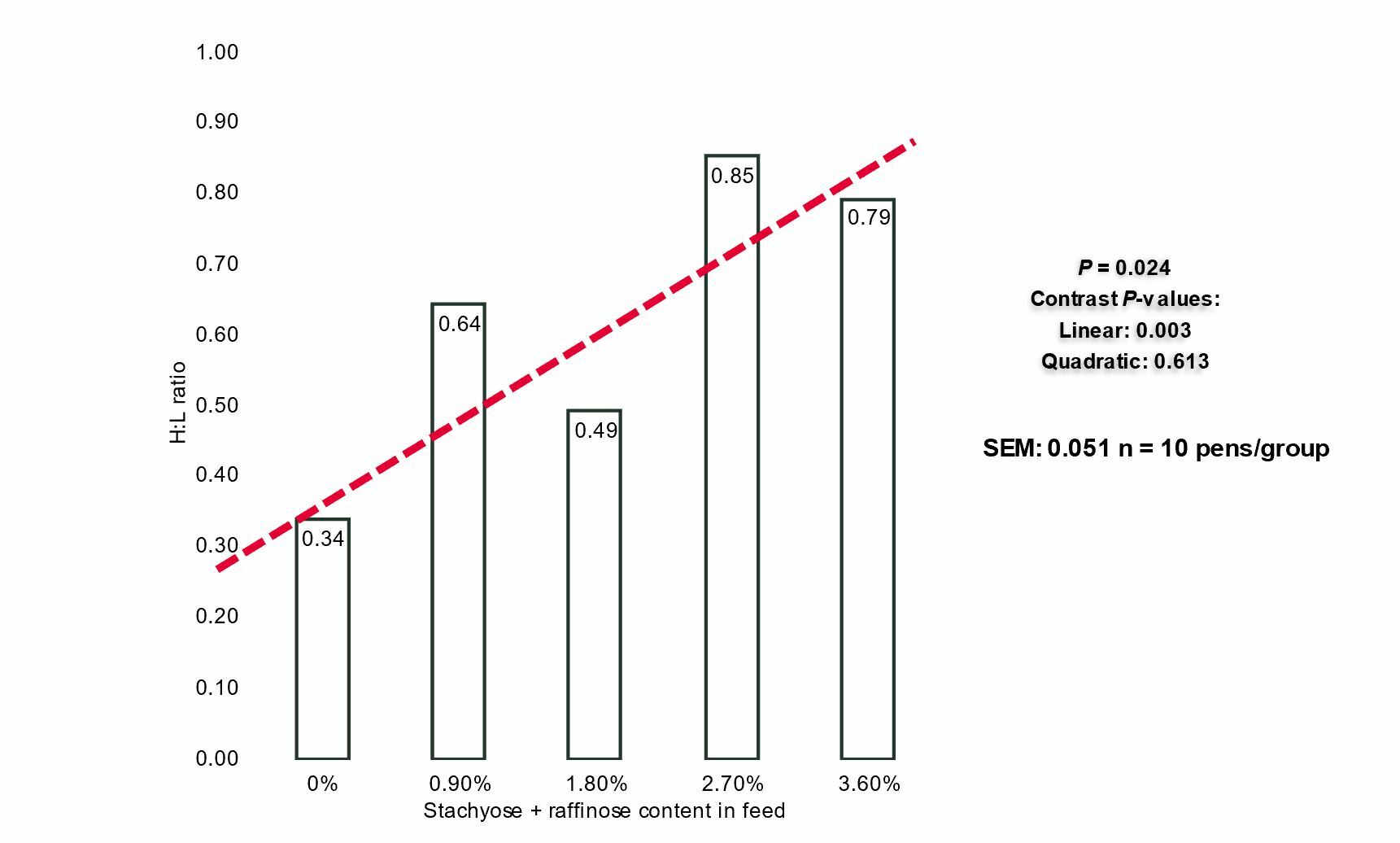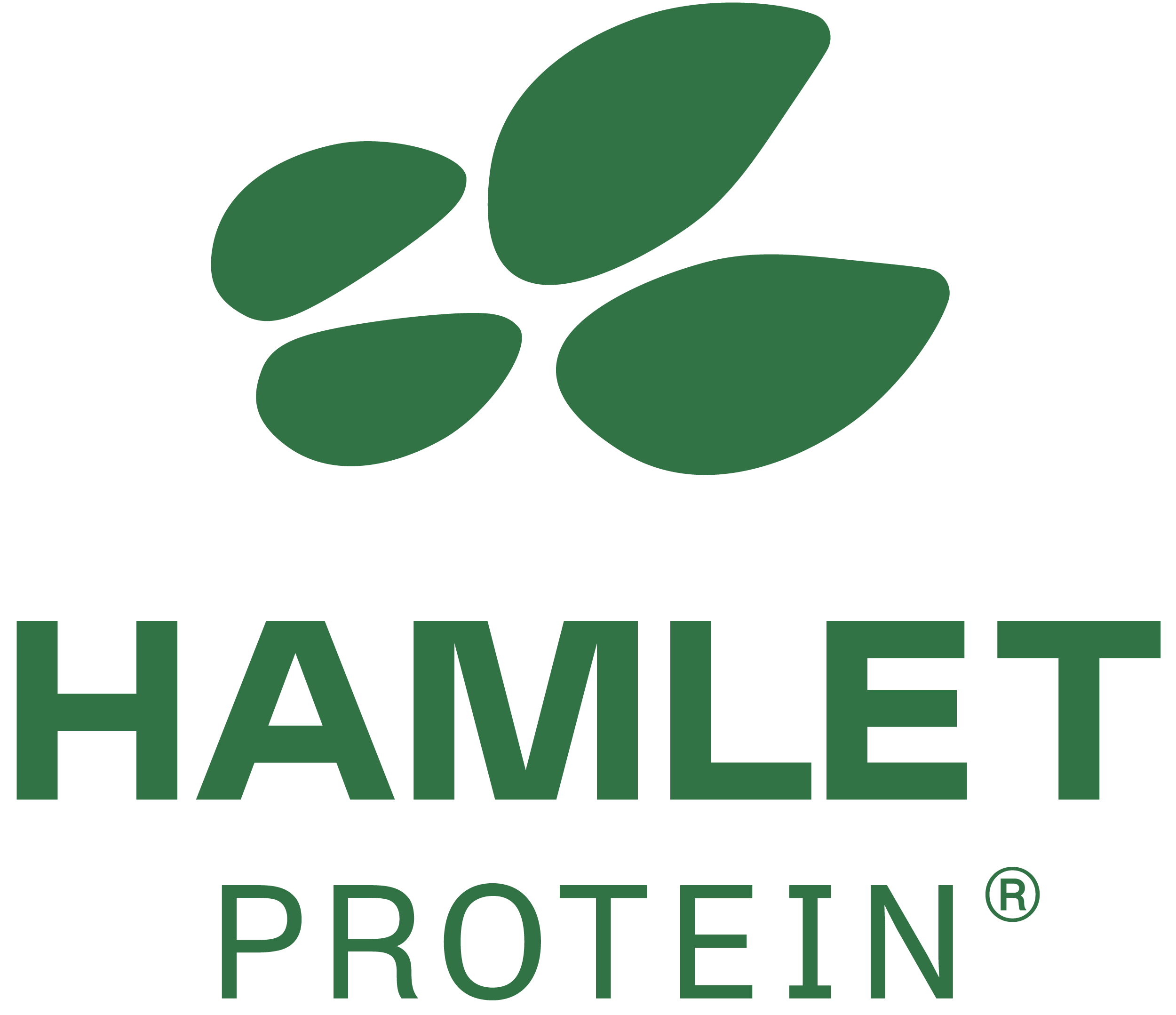



Minimizing intestinal inflammation by reducing ANF content of the feed
A properly functioning immune response is critical to cope with stressors facedFor optimal profitability in animal production animal health is key. However, under modern production conditions, farm animals are continuously exposed to various stressors, including high stocking densities, feed changes, temperature extremes and pathogenic pressure. A properly functioning immune response is necessary to cope with such stressors and/or to eliminate it from the body. These defense mechanisms, however, can be costly to performance resulting in the partitioning of nutrients away from performance to support of the immune system. This is due to the inflammatory response that is activated when the immune system is triggered. Reducing inflammation in the gut through the reduction of anti-nutritional factors in the diet is a good strategy to maximize performance.
What is intestinal inflammation?
The gut plays a crucial role in protecting the body from outside ‘danger’ as it is in direct contact with food antigens, pathogens, toxins and commensal bacteria. Not surprisingly therefore, about the largest part of all the immune cells can be found in the gut. When exposed to some sort of threat the immune cells in the gut react with an inflammatory reaction.
Inflammation consists of a cascade of coordinated events that occur in response to pathogenic, chemical, or physical challenges disrupting tissue integrity and homeostasis. The main purpose of inflammation is to rapidly resolve the source of the disturbance (eliminate or isolate), alert other parts of the immune system, repair and remove the damage and return to a state of homeostasis.
Inflammation deviates nutrients away from performance
Because mounting a proper immune process is a demanding process, requiring large amounts of nutrients (eg amino acids, vitamins and minerals) and energy it leads to a redistribution of these nutrients (Lochmiller and Deerenberg, 2003). Nutrients that otherwise could have been used for physiological processes like growth or milk production are now prioritized to the immune system. Consequently, the body must, if not supported by sufficient nutrient intake, use its own energy -and nutrient reserves. In the skeletal muscle, proteins are degraded (proteolysis), and the synthesis of proteins is decreased to rise the availability of amino acids, to be used in the liver for glucose synthesis. At the same time, glycogen and lipids are also degraded to generate more energy for the immune system (Lochmiller and Deerenberg, 2003).
Chronic inflammation leads therefore to weight- and body condition loss. It has been estimated that protein synthesis in the muscle decreases by 23% under chronic intestinal inflammation while protein synthesis in the liver and the intestines increase by 63% and 19%, respectively (Mercier et al., 2002). This shows the deviation of nutrients away from performance to support of the immune function. Even subclinical (so not showing external signs) inflammation may significantly re-allocate nutrients to sustain the process and therefore reducing animal performance.
However, this is not the only cause of performance loss. In most cases inflammation of the gut leads to malabsorption, even further restricting the availability of energy and nutrients. Malabsorption is caused by bacterial overgrowth and accompanying structural changes of the intestinal epithelium. Inflammation negatively affects the intestinal barrier function by weakening the tight junctions, leading to the famous “leaky gut” syndrome. The fluids and electrolytes that are liberated in the lumen provoke diarrhea and contribute malabsorption even more (Berkes et al., 2003).
Cost of inflammation
Even though it is clear that animal producers pay a price for a functioning immune system it is difficult to predict what the exact cost of inflammation is. Even a mild immune response in pigs can reduce body weight gain and feed intake by 15-21% (Spurlock et al. ,1997). While a clinical infection may lead to a growth loss up to 40% according to Pastorelli et al. (2012). The estimation in broilers is a reduction in body weight gain around 9% due to systemic immune responses, frequently initiated by gut inflammation (Cardoso Dal Pont et al., 2020).
So, it seems wise to limit inflammatory responses to maximize performance. For decades the animal production business has successfully used antibiotic growth promoters (AGP’s) to do so. The reason why this strategy was so successful was that AGP’s were not only active as antimicrobial agents but also exerted strong anti-inflammatory properties (Niewold, 2007).
There is, however, a growing public concern about the relation between extensive use of growth promoters and the development of antibiotic resistance, affecting both animal -and human health. As a result, the use of AGP’s has been restricted or completely banned (like in the European Union).
Avoiding intestinal inflammation is the most successful strategy to maintain production efficiency
Without the possibility to use AGP’s the animal feed industry has validated alternative strategies to reduce the incidence of inflammation. Most products focus on decreasing the number of pathogens that reach the gut alive. However, pathogens are not the only cause of inflammation in the gut. Inflammation can also be induced by non-pathogenic molecules like feed particles.
A very well-known group of inflammatory agents present in animal feed is anti-nutritional factors (ANF’s). ANF’s cover a range of substances (like stachyose, raffinose, trypsin inhibitors and β-conglycinin) that provide plants important protection against mold, bacteria, and over-consumption by wild animals. While being beneficial for the plant, in the gut and especially the gut of young animals ANF’s trigger a strong inflammatory response resulting in chronical inflammation of the gut, poor digestion, and low performance. Especially soy (the main protein ingredient in animal diets) has a high ANF’s content.
It is well known that growth performance and intestinal health of piglets is impaired when fed diets with high amounts of anti-nutritional factors. Our studies show that replacing all or part of SBM by HP 300 (an enzyme-treated soybean meal with a reduced content of soy ANF’s) improves piglet growth (figure 1a) and feed efficiency throughout the nursery phase while reducing scouring. In addition, replacing SBM by HP 300 in nursery diets, improved oxidative status and reduced damage to the intestinal villi (figure 1b) and increased the expression of tight junction proteins (Ma et al., 2019 a; b).

In chickens, the effect of soybean trypsin inhibitory activity (TIA) on dietary protein digestibility in chickens has been extensively studied. Palliyeguru et al. (2011) stated that the amount of TIA not only affects protein digestibility but also affects the incidence of sub-clinical necrotic enteritis (NE), the most frequent intestinal inflammation in broilers. Thus, a linear increase in sub-clinical NE lesions in the duodenum, jejunum (mid small intestine) and ileum was observed with increasing TIA in feed.
In recent years, the inflammatory effect of soy ANFs other than TIA in the intestine of young chicks has been studied. Kang et al. (2020) observed that dietary soy β-conglycinin-induced allergic sensitization marginally damages the epithelium lining of the duodenum villi and, in addition, significantly increased the accumulation of mast cells in the lamina propria and crypt of the duodenum in 7d-old chicks. Moreover, the TNF-α level significantly increased by feeding β-conglycinin, confirming that β-conglycinin may lead to an inflammatory response in the chicks’ small intestine.
Similarly, recent studies by the University of Arkansas Poultry Science Department (Teague et al., 2021) have shown that stachyose and raffinose, indigestible oligosaccharides in soybean meal, exert a dose-dependent inflammatory effect not only in the gut of starter chicks but also at the systemic level. Thus, these authors observed that tight junction permeability in intestinal epithelium increased quadratically in 14d-old chicks as dietary stachyose and raffinose increased, with the greatest permeability observed at 1.8% dietary level. Increased tight junction permeability will result in increased secretory passage of ions and water causing leak flux diarrhea (gut leakage). Thus, in the same study, there was a linear increase in excreta moisture as dietary soy oligosaccharides increased. Furthermore, leaky gut leads to translocation of gut bacteria, microbial compounds, and/or antigens generating a systemic immune response, Therefore, beyond the intestine, a linear increase in whole blood heterophil-to-lymphocyte ratio (H:L-ratio) was observed as dietary stachyose and raffinose increased (Figure 2). The H:L-ratio is generally considered a reliable and robust indicator of stress in poultry. This parameter allows, in a simple way, to evaluate activity of the immune system and health state of birds.
In short, today, the role of soy ANF’s as triggers of intestinal inflammation in young birds is being amply demonstrated. Ensuring the lowest possible ANF’s in starter poultry feed is a valuable tool to improve the health and welfare of birds and in reducing the financial losses from feed-induced gut inflammations.

At Hamlet Protein, we have identified the ANF’s that are least tolerated by piglets, calves, and chicks which are also most critical to their health and development. Our process is designed to inactivate these ANF’s gently and effectively to optimize the availability of the essential amino acids in our specialty soy proteins to safeguard gut health of young animals.
References
Berkes, J., Viswanathan, V.K., Savkovic, S.D., Hecht, G., 2003. Intestinal epithelial responses to enteric pathogens: effects on the tight junction barrier, ion transport, and inflammation. Gut 52, 439–451
Cardoso Dal Pont, G., Farnell, M., Farnell, Y., Kogut, M.H., 2020. Dietary factors ad triggers of low-grade chronic intestinal inflammation in poultry. Microorganisms 2020, 8, 139; doi:10.3390/microorganisms8010139
Emborg, H., Ersbøll, A.K., Heuer, O.E., Wegener, H.C., 2001. The effect of discontinuing the use of antimicrobial growth promoters on the productivity in the Danish broiler production. Prev. Vet. Med. 50, 53–70.
Kang, D.R., Belai, S.A., Song, K.D., Yoon, C., Park, B.Y., Shim, K.S., 2020. Soybean β-conglycinin induces intestinal immune
responses in chicks. Brazilian Journal of Poultry Science Volume 22, Number 2: 001-010. http://dx.doi.org/10.1590/1806...
Lochmiller, R. and Deerenberg, C., 2003. Trade‐offs in evolutionary immunology: just what is the cost of immunity? Oikos 88(1), 87-98.
Ma, X.; Shang, Q.; Hu, J.; Liu, H.; Brøkner, C.; Piao, X., 2019a: Effects of replacing soybean meal, soy protein concentrate, fermented soybean meal or fish meal with enzyme-treated soybean meal on growth performance, nutrient digestibility, antioxidant capacity, immunity and intestinal morphology in weaned pigs. Livestock Science., 225, 39–46.
Ma, X. K.; Shang, Q. H.; Wang, Q. Q.; Hu, J. X.; Piao, X. S., 2019b: Comparative effects of enzymolytic soybean meal and antibiotics in diets on growth performance, antioxidant capacity, immunity, and intestinal barrier function in weaned pigs. Animal Feed Science and Technology., 248, 47–58.
McEwen, S.A., Fedorka-Cray, P.J., 2002. Antimicrobial use and resistance in animals. Clin. Infect. Dis. 34 Suppl 3, 93–106.
Mercier, S., Breuille, D., Mosoni, L., Obled, C., Patureau Mirand, P., 2002. Chronic Inflammation Alters Protein Metabolism in Several Organs of Adult Rats. Nutrient Metabolism. 132(7):1921-1928.
Niewold T., 2007. The nonantibiotics Anti-inflammatory effect of antimicrobial growth promoters, the real mode of action? A Hypothesis. Poultry Science 86:605-609
Palliyeguru, M.W.C.D., Rose, P.S., Mackenzie, A.M., 2011. Effect of trypsin inhibitor activity in soya bean on growth performance, protein digestibility and incidence of sub-clinical necrotic enteritis in broiler chicken flocks. British Poultry Science Volume 52, Number 3: 359—367
Spurlock, M. E., Frank, G. R., Willis, G. M. et al., 1997. Effect of dietary energy source and immunological challenge on growth performance and immunological variables in growing pigs. J. Anim. Sci. 75:720–726.
Teague, K.D., Tellez-Isaias, G., Petrone-Garcia, V., Vuong, C.N., Blanch, A., Rasmussen, S.H., Brown, K., Rochell, S.J., 2021. Dietary soy oligosaccharides affect the gastrointestinal health and feed efficiency of growing chicks. In: Proceedings of the Symposium on Gut Health in Production of Food Animals, St. Louis, Missouri, Oct 1 – Nov 3, 2021: 4







